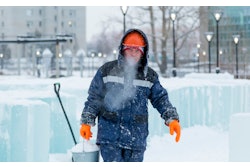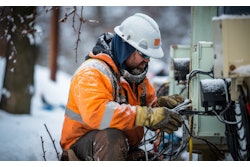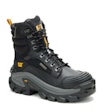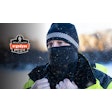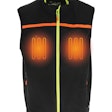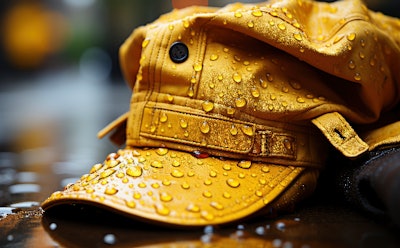
Outdoor working conditions that expose a worker to snow or rain may necessitate wearing a work jacket that is water resistant or waterproof. There are several reasons why waterproofing a work jacket is advisable.
Protection from the elements is uppermost. Prolonged exposure to rain, snow, sleet or splashing liquids may cause health issues. Productivity may be affected in terms of less focus and energy when a worker feels cold and wet. Many waterproof materials also are windproof.
Waterproof work jackets may provide protection from electrical hazards. If a work jacket has a DWR (Durable Water Repellent) rating, additional waterproofing may not be necessary as it can effectively keep the person wearing it dry and comfortable.
Deciding to Waterproof Your Work Jacket
In the event a work jacket does not have proper water repellent features, it is possible to apply waterproofing products to provide that desired protection.
Before doing so, check the care label on the work jacket as not all jacket materials are suitable for waterproofing. Nylon and polyester work jackets may already feature a water-resistant coating that can be damaged by applying some waterproofing products. Leather and canvas, however, may greatly benefit from waterproofing.
If the work jacket can be waterproofed, it is important to choose the right product to do so. Waterproofing product options on the market include wax-based solutions, sprays and wash-in solutions. Follow the manufacturer’s instructions for product application.
When using a wash-in solution, generally the jacket is to be washed in the washing machine on a delicate cycle with warm water. The wash-in water repellent can be added to the fabric softener dispenser or in the final rinse. If using a wax-based solution to waterproof a work jacket, use a sponge or cloth to spread the solution on to the outer surface generously and evenly. Check to ensure all of the seams on the work jacket are covered.
The application of some waterproofing sprays may compromise the breathability of a jacket. The optimal waterproofing spray for garments does not create a complete seal but rather remains semi-porous to allow the material to be breathable and not trap moisture. Also, jackets with breathable materials allow for some moisture release that enables the worker to stay comfortable during exertion.
Learn More: What Makes a Great Construction Jacket?
Things to Consider
Some waterproofing products – such as non-silicone sprays – may be better for advanced fabric technology but can be harmful to the environment. Eco-friendly waterproofing options are available.
Before applying the waterproofing product, empty all of the pockets of the work jacket and clean it according to care instructions as oil, grime, dirt and stains may interfere with the effectiveness of the waterproofing treatment. Often, using warm water and mild soap to clean the work jacket will suffice before beginning to waterproof it.
Test the waterproofing product in a small, inconspicuous area of the work jacket to ensure it does not discolor the jacket or cause adverse reactions. When applying the waterproofing product, do so evenly, paying heed to zippers, seams and areas more prone to water penetration. Work in a well-ventilated area as to avoid inhaling harmful fumes from using the waterproofing product.
Use gloves, a clean cloth and a drop sheet or newspaper to protect the workspace during product application. Avoid spraying the waterproofing product near open flames or sparks. Wipe excess waterproofing spray with a clean cloth.
The work jacket should be allowed to dry thoroughly after waterproofing. Often, it can be air-dried, but check product instructions for guidance. Some people opt to apply a second coat of waterproofing. In washing a water-repellent jacket, use a detergent designed for waterproof materials. Run the regular wash cycle with warm water when washing the jacket. If an attempt to waterproof a jacket does not go as intended, the waterproofing spray can be washed off with warm water and detergent. If that fails to produce the desired results, attempt it again using three-quarters cup of baking soda.
Waterproofing effectiveness can wane over time, especially if the jacket is continuously exposed to harsh weather conditions. Waterproofing commonly is done once a year and some recommends call for once every quarter. The frequency with which a work jacket is waterproofed will be dictated by how often the jacket is used and put to the test in the elements.
